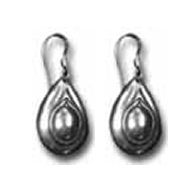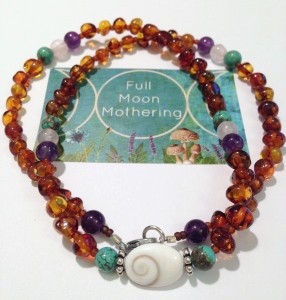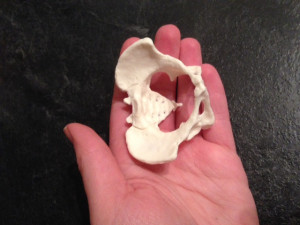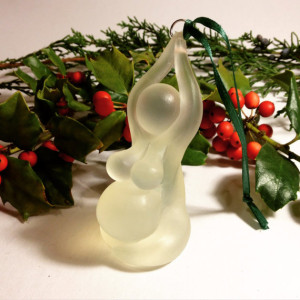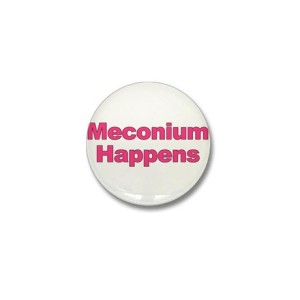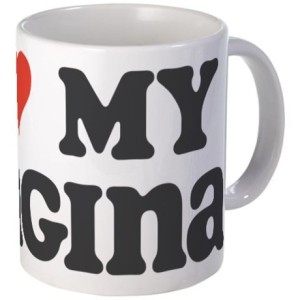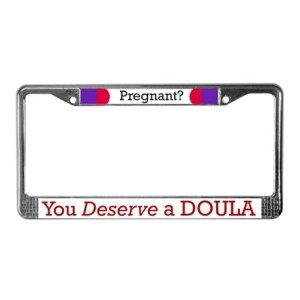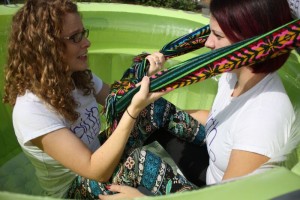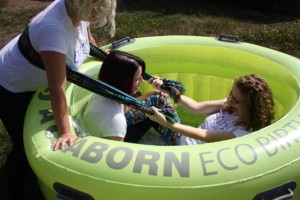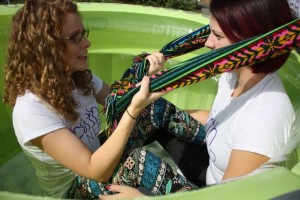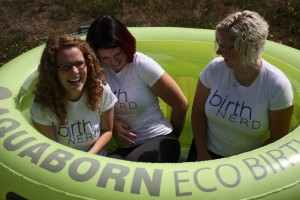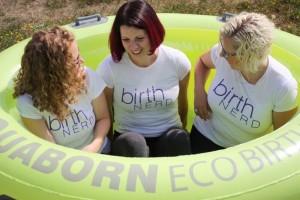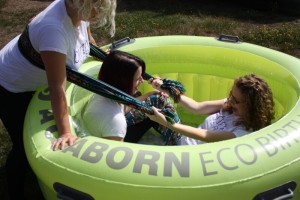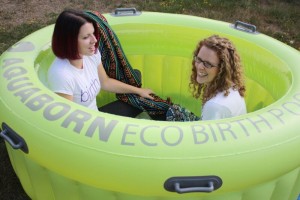If you are putting babies to bed, you might want to save this for later. [Read more…]
No, I’m not excited about Kindergarten- A parents perspective.
Kindergarten was a day I dreamed of when my little one was 2, 3, 4 years old.. But now that she is 5, and on her way so soon… I’m not excited. My head is filled with many rational (and many irrational) thoughts. For a while I smiled and pretended Kindergarten was going to be a great place for my child to learn and socialize. Now my daughters fears are my fears and as a parent I feel helpless. Will I get her to school on time? Will she eat her lunch? Will she get to the toilet on time? I know many children for many years have manged…. (now I’m back to my rational side). many kids cry in the beginning and a few weeks or months later they cry when a parent comes to pick them up because they don’t want to leave. Rationally I know this. I mean heck, my child has gone to daycare and preschool and excelled at both. Why is kindergarten different?
As I asked my other Mom friends it turned out we all had this eternal struggle we were all hiding. All pushing aside our emotions as we bought school clothes, bought new lunch kits and searched for the few last minute school items. When we started talking about it, there were tears and fears… From the adults. We all worry if our child will be liked by peers and teachers, will our child be a bully or be too passive and overlooked. Will they eat their lunch, run outside of the school boundaries on the playground or cry for me all day.
I’m thankful I have woman to talk to to make this transition for a parent easier. Our fears are not irrational, they are feelings and they are REAL and are VALUABLE.
On the day we signed up my daughter for Kindergarten we documented with an image of us, 2 parents navigating the new life of a school aged child. Kindergarten is a big step for children, but also as parents. I know in weeks and months to come I will embrace Kindergarten and probably learn to love it just as my 5 year old will. But in the mean time, I am ok with feeling uncertain and it will help me remember my daughter may be insecure, and her feelings are real too.
What to get your doula wife, girlfriend, friend, sister….. For Christmas
I started writing this post on August 25th 2015, 4 months before Christmas day, on a day that was 26 degrees celsius. I wanted to find the very best birthy items to add to this post so all of us birthy folks can get a new fun stocking stuffer. Doulas, Midwives and Childbirth Educators are a breed of our own. We are up all night, we dissect placentas for fun, we talk about vaginas and labias around the lunch table and are always reading/learning and talking birth. We deserve a little something special from our close friends and families.
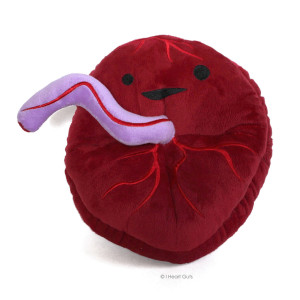
1- Who in the world doesn’t want a stuffed placenta? Ok, I hear ya… it’s not for the common folk, but us birthy peeps think this is adorable
2- A beautiful way to proclaim your calling! is what this website boasts. Look closely, they are “crowning” earnings
3- Full Moon mothering makes all types of baltic amber necklaces for children and adults. I’m in love with my mama zen necklace and I wear it all the time… Now I need the matching bracelet.
4-This tiny pelvis is a great educational tool, and I’m sure it wold be a great conversation starter at the dinner table!
5- What birth worker wouldn’t want this Oxytocin Molecule scarf?
6- Need an ornament to add to a stocking? This “Pregnant Mother Goddess” ornament is perfect.
7- This pin…. Really everyone needs it.
8- Everyone loves mugs, for real… Everyone. And doulas love their vaginas. It’s a fact really.
9- Car bling? A gift that keeps on giving… As advertisement.
10- And lastly they need some eye catching gear to wear to a birth. If this shirt doesn’t say doula, really… What does.
Have you seen any other fun items that would be great for gifts? Add it to the comments.
Happy Birthing- Nicole
Ridge meadows Doula Services is a collective of 6 doulas that work out of Maple Ridge BC. We provide birth doula and postpartum doula support, placenta encapsulation and childbirth education in the Fraser Valley and Lower Mainland.
Birth pool rentals
Ridge Meadows Doula Services now has an Aquaborn birth pool for our home birthing clients for only $175 additional to your doula fee. These pools are the highest quality inflatables available on the market and made from strong, durable eco-vinyl. With 6 handles it gives more position choices than ever before, and a white non-slip bottom ensures optimum safety and visibility. To achieve buoyancy in water and allow easy movement between positions, 21″ of water depth is required. the Aquaborn Eco Birth Pool a little deeper so that your waist can stay in the water even when you want to lean over the pool.
Pool Rentals includes
Pool Instructions
Air Pump
Tarp
Tap Adapter
Submersible pump
The best part about hiring Ridge Meadows Doula Services is we will clean up after the birth, put a load of laundry in, change your sheets, tuck you in and make sure you and your partner are fed. Set up and take down the birth pool are included leaving your house seemingly clean shortly after you have a baby. (And doula clients get a discount on pool rentals)
Think your child is ready for a booster seat?
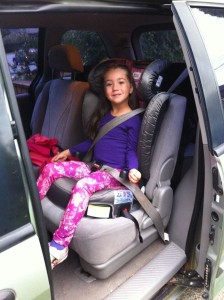
Many parents want to know when their child is ready to ride in a booster seat. In Canada, the law says children can ride in a booster once they reach 40 pounds. Some seats also specify the child must be at least 4 years old, but others don’t, so out in the world, we see many children in boosters as young as 3 or even 2. Why is this a problem, you ask?
The seat belt must fit a child properly to be safe and effective. When a very small child is placed in a booster, often times, the shoulder belt is cutting across the neck instead of being centered on the shoulder, and the lap belt is on the belly instead of over the hips. Poor belt placement puts stress on soft tissue and organs, instead of bone. Poor belt placement can also mean the seat belt is not holding the child as well as it should. This could cause serious injuries when force from the seat belt is exerted on soft tissues such as the belly, damaging internal organs that aren’t being protected by bones.
In addition to fit issues, many children do not possess the impulse control needed to properly sit in a booster seat for the duration of the car ride until they are around 5 ½ or 6 years old. Unlike in a 5-point harness where the child physically cannot move out of position once buckled, boostered children have a lot more freedom. If children are bending forward to pick up a dropped snack, wrenching their torso around to see a passing firetruck, leaning forward to find a book in the seat pocket in front of them, or reaching across the width of the car to poke a sibling, then the seat belt will not be positioned properly, and it will not provide proper protection if a crash occurs. The risk during a crash is the child’s head striking the interior of the vehicle: windows, seats, or other people’s heads.
Some children will fit in their 5-point harness seat until they are 7 or even 8, and leaving them in harnessed seats is a great idea especially if you don’t feel like they can sit properly for the whole ride. Some boostered children will fall asleep and end up leaning out of position either forward or to the side. If this is the case, a 5-point harness is your best bet. However, there are reasons why parents may put children into a booster before they outgrow their harnessed seat. A family may want to pass the harnessed seat down to a younger sibling and move the older child into a booster. Or, perhaps due to frequent carpooling, it may be better to use a booster because other parents may not know how to install your child’s 5-point harness seat. An improperly installed or improperly used harnessed seat is much more dangerous than a properly used booster, provided the child is over 40 pounds and sits properly all the time.
There are other reasons why you may want to delay moving your child into a booster. If you have three car seats installed in a row, it may have been difficult to install those seats, but imagine trying to stick your hand in between to buckle a seat belt every day? In most cases, it’s easier for children to buckle themselves into their 5-point harness rather than wedge their hands between seats to buckle the seat belt. Also, if your child is not quite ready for the booster, and still sometimes moves out of position, it can be quite distracting for you as the driver to keep glancing back in the rear view mirror to check.
If children outgrow their 5-point harness seat, and aren’t ready for a booster, either because of weight or maturity, there are 5-point harness seats with very high top harness slots available, such as the Britax Frontier and the Evenflo Sureride.
So how do you know whether your children are booster-ready? Once your child is consistently over 40 pounds, and at least around 5 ½, you may want to consider booster-training. You know your child best and are the best judge of whether your child is developmentally ready. Take your child booster shopping. Try the booster in your vehicle to insure it fits well, and the seat belt fits well over your child: lapbelt should fit low over the hips or upper thighs, and never over the belly, and the shoulder belt should sit flat in the center of the shoulder, not falling off the shoulder edge, or cutting into the neck. Make sure the shoulder belt retracts back easily if your child moves slightly then moves back. You can start by telling your child that the new seat is for kids who can sit still really nicely in the car, and go over examples of what’s allowed and what’s not allowed while riding in the car. For example, you might tell your child “You can move your arms and legs, but keep your body still so the seat belt always fits properly. If you drop something, you must wait until we stop, and I will get it for you.” You may want to start booster training during short trips where another adult can watch the new booster rider carefully to give feedback or warnings, then gradually try longer rides before putting the child into a booster full-time.
We recommend first putting your child into a high back booster. This establishes some physical boundaries, and high backs have head support for a tired or sleeping child. Once children do well in a high back booster for some time, and no longer fall asleep in the car, you can try a no back booster. Remember that if your vehicle doesn’t have headrests at least up to the tips of the child’s ears, you would need a high back booster in that seating position. In this case, check that you purchase a high back that does not require head support behind it.
So, the key points to remember are:
- By law in BC, children must be over 40 pounds, and usually also at least 4 years old, to ride in a booster.
- However, many 4 and even 5 year olds aren’t ready for the freedom, so it’s better to keep them in a 5-point harness until they are ready. Don’t be in a hurry to move them into a booster just because all their friends are riding in one. Most are ready by age 5 ½ or 6.
- Remember that boosters can *only* be used with lap/shoulder belts, never with lap-only seat belts.
- Take your child shopping to get a well-fitting and comfortable booster seat.
- Establish some rules with your child to respect the new found freedom that comes with boostering.
Here are some useful links:
A list of technician-recommended booster seats: http://vicarseattechs.com/our-favourite-seats/dedicated-booster-seats/
Information on the booster stage including a list of which high back boosters don’t require head support behind them, and a graphic of good belt fit vs poor belt fit for a boostered rider: http://vicarseattechs.com/2012/to-booster-or-not-to-booster/
To ask car seat questions, or to connect with a local technician, join this Facebook group: https://www.facebook.com/groups/FraserValleyCarSeatSafety/
-Elaine Wardley, CRST

